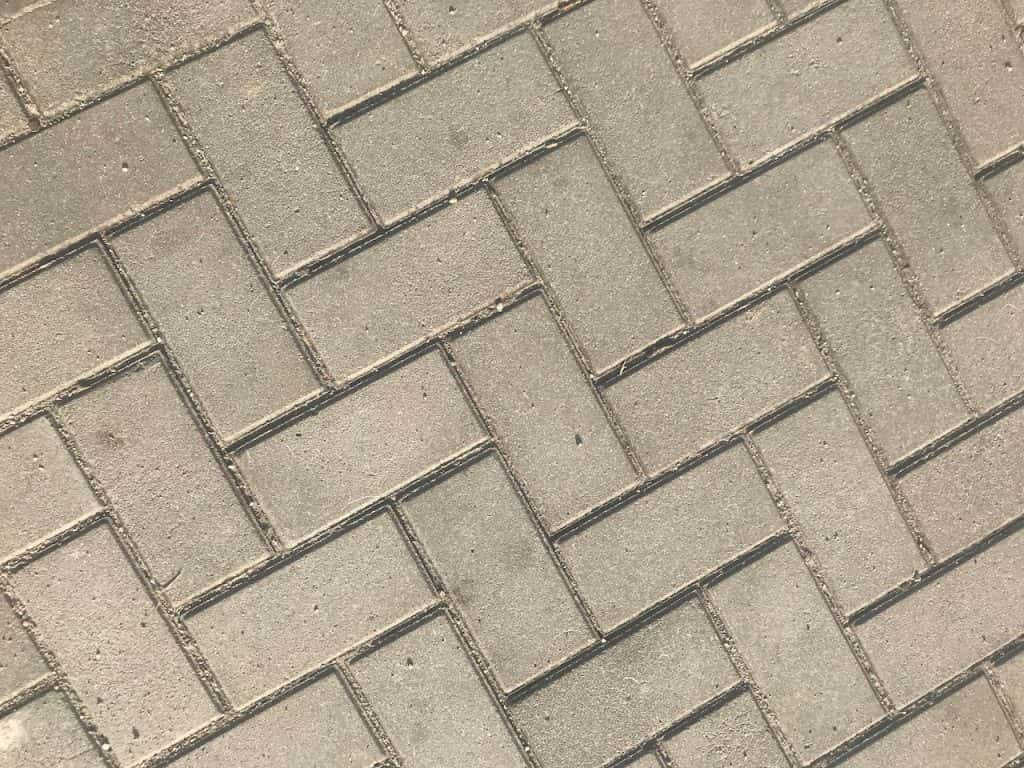Originating in the Kota and Jhalawar districts of Rajasthan, the Kota stone enjoys immense popularity as a natural stone construction material. You may have seen Kota stone floor design primarily in public buildings such as offices, schools, hospitals, and railway stations, to name a few. However, a little-known fact is that Kota stone floor designs also look stunning when used in or around the home!
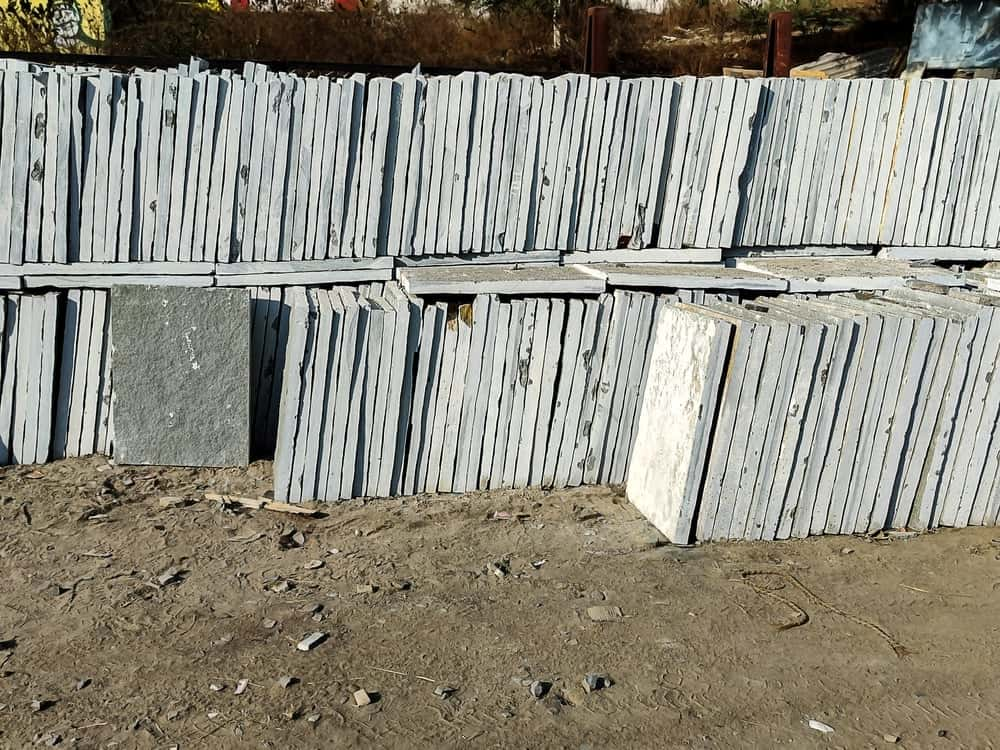
Surprised? We go into the depths of everything you need to know about Kota stone – the good and the bad – along with a few Kota stone designs in rooms and outdoors. So, let’s get started!
What is Kota Stone?
The Kota stone is a type of fine-grained limestone with a chemical composition comprising calcium carbonate (38% to 40%), magnesium oxide (4% to 5%), and silica (24% to 25%). Since it is a sedimentary rock, it is hard and compact with a homogenous cross-section.
It naturally has a leathery texture that somewhat resembles raw grey granite or slate. Of course, it needs to be sealed to preserve such appearance. For those who prefer a polished look, Kota stone flooring is also available in a mirror surface finish that is brilliant and attractive.
Apart from its natural, earthy colour, Kota stone is also popular for its durability, lustre, porosity, homogeneity, and cheapness. It is a highly versatile stone due to these properties that offer a range of unique advantages, which we will be discussing in the subsequent sections. With its property and versatility in mind, some of the typical applications of Kota stone design in rooms and around the house include:
- Kitchen platforms
- Corridor and lobby areas
- Pathways and staircases
- Bathroom
- Terrace and balconies
- Garden area and driveways
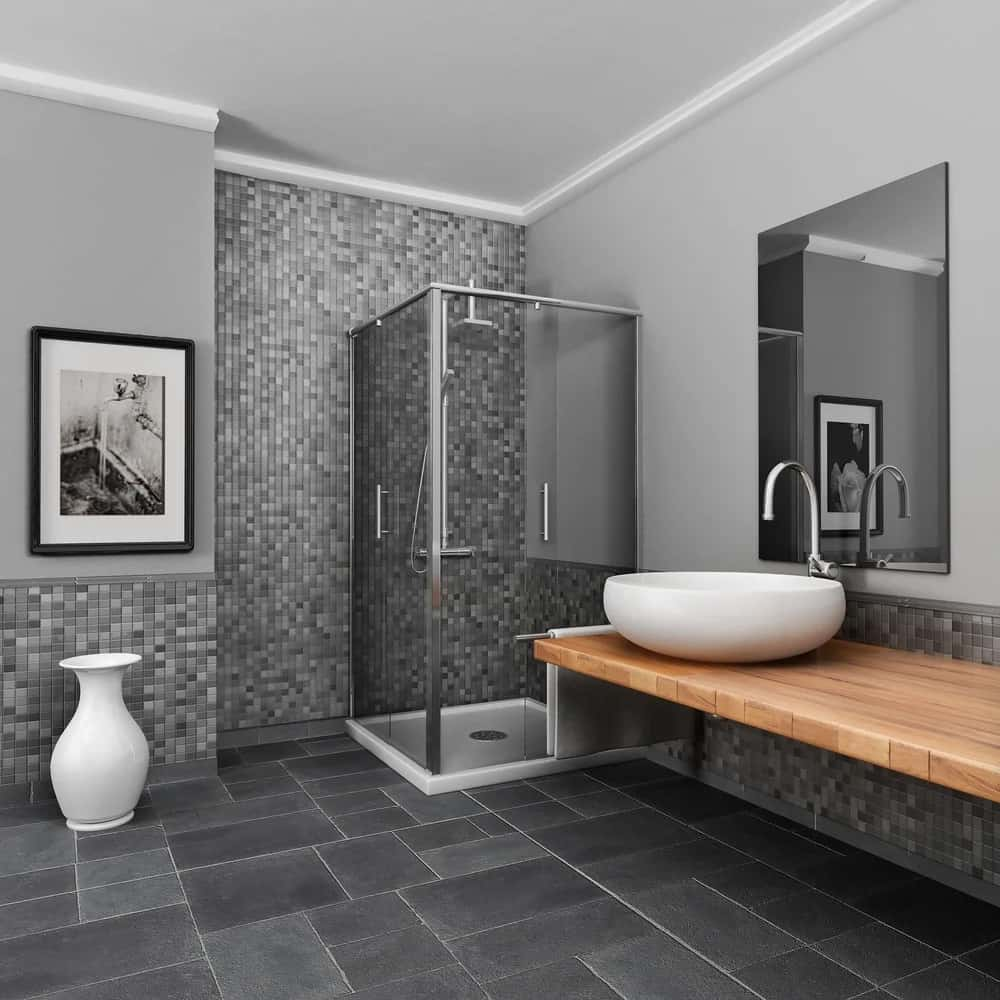
Advantages of Kota Stone Flooring
The use of Kota stone designs in rooms can yield the following advantages:
- The permutations and combinations that you can run for Kota stone flooring are virtually infinite if you tweak the variables like colour, shape, size, etc. Moreover, since they are all complimentary and characteristically homogeneous, you can pull off several multi-pattern Kota stone floor designs with the same material!
- Kota stone flooring is non-porous and thermal neutral. These properties impart high durability to the flooring, making it viable for a good number of years – even in outdoor applications! Rest assured, the overall look and appeal of Kota stone floor designs will not diminish even when subject to harsh weather conditions like rain, sun, or humidity.
- In addition to its temperature resistance and non-porous nature, the fact that Kota stone floorings are non-slippery make them the perfect candidate for outdoor use in your terrace, balconies, and gardens. At the same time, you can also use Kota stone designs in bathrooms and kitchens where water or moisture paired with high foot traffic can pose a slipping hazard.
- Another massive and understated advantage of Kota stone flooring is that they are supremely cost-effective. Its affordability and inertness are two of the main drivers of why it is widely used in commercial applications.
- Even though Kota stone floor designs are pocket-friendly, they do not look the part. They carry with them an air of luxury that puts them on par with other aesthetic natural stones like granite and slate. At the same time, they offer immense colour diversity as well, which ups their visual appeal.
- While the durability of Kota stone flooring is impressive by itself, the fact that it requires little to no maintenance is yet another compelling reason to choose this stone flooring option.
- Even if the Kota stone flooring were to age, they do so gracefully, which offers long-term value – and when it comes pegged with durability and low maintenance, it is nothing short of heaven-sent!
Disadvantages of Kota Stone Flooring
While stone flooring in Kota stone design is attractive and practical for various reasons, it does have its fair share of limitations, which are summarised below:
- Although raw Kota stone has a leathery appearance similar to granite when it is polished, the two stones look nothing alike. It is so because polished Kota stone lacks the lustre or hard shine of natural stones.
- As Kota stone is a variant of limestone, it may react with harsh or acidic cleaners and lose colour or integrity. One has to be particularly careful while using Kota stone as kitchen platforms, as items like oil or lime can also damage its appearance.
- Even though Kota stone tiles are available in a variety of small and big sizes, they are not available in large slabs. It is because Kota stone is particularly fragile and can crack or break when used as such.
- Despite minimal maintenance requirements, Kota stone flooring may be prone to flaking or chipping if they are left untreated for very long. However, regular polishing and weather sealing can prevent this.
- Kota stone flooring has an average thickness of 1.5 inches, which makes it rather thick and unsuitable for use with thinner tiles.
- If you are choosing Kota stone floor designs for their rustic charm and natural colours, then you will be impressed by their colour inconsistency. However, if you want a uniform appearance, then you will be disappointed.
Trendy Kota Stone Floor Designs for the Modern Home
Now that you may be itching to experiment with Kota stone design in your rooms and areas around the home, here are a few Kota stone floor design ideas that can get you started:
Black and White Checkered Kota Stone Design
Let’s kick off this list of Kota stone floor designs with a classic black and white patterned Kota stone floor design. This design is reminiscent of the typical 70s diner, and for a good reason, too – they are easier to clean and hence help maintain hygiene.
The black Kota stone flooring designs contrast vividly with the alternating white ceramic tiles to give a checkered effect. You can also try a similar Kota stone floor design in different colours, like different shades of brown or blue and black. While this design has been used in the kitchen, you can also try it out in the lobby, foyer, or driveway of your home.
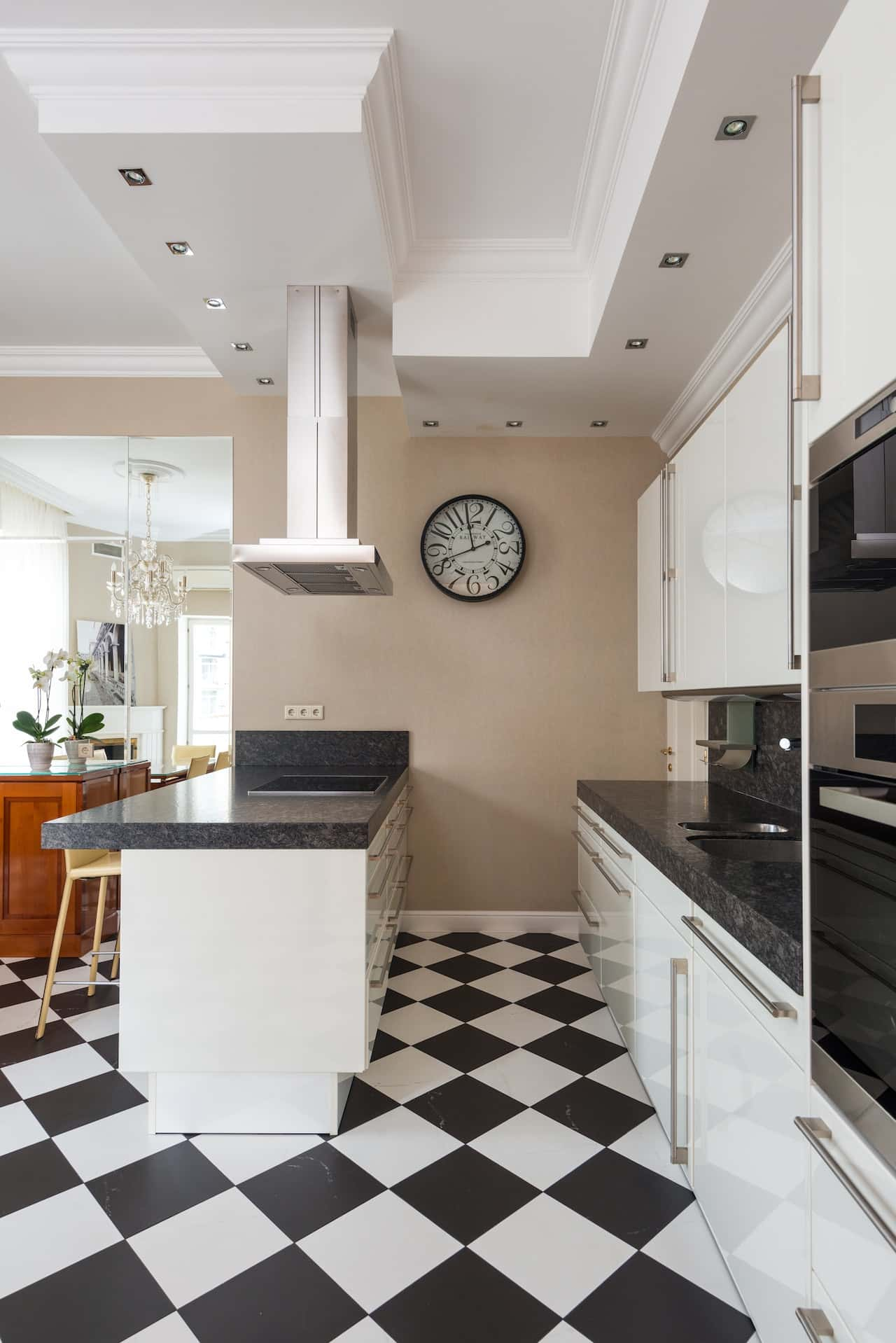
Greyscale Gradient Kota Stone Flooring
While the previous Kota stone floor design was all about contrast, this one is more about closely related shades. Since we have already mentioned how Kota stone is available in different hues of grey and black, you can borrow Kota stone flooring designs that pair gradients of black and grey to make the Kota stone flooring look chic and aesthetic.
It suits a minimalistic setting by restricting the number of colours used. If you were to feel creatively stunted by the monochromatic shades, you could easily experiment with different shapes of tiles – think honeycomb or interlocking kinds – to make the design even more interesting.
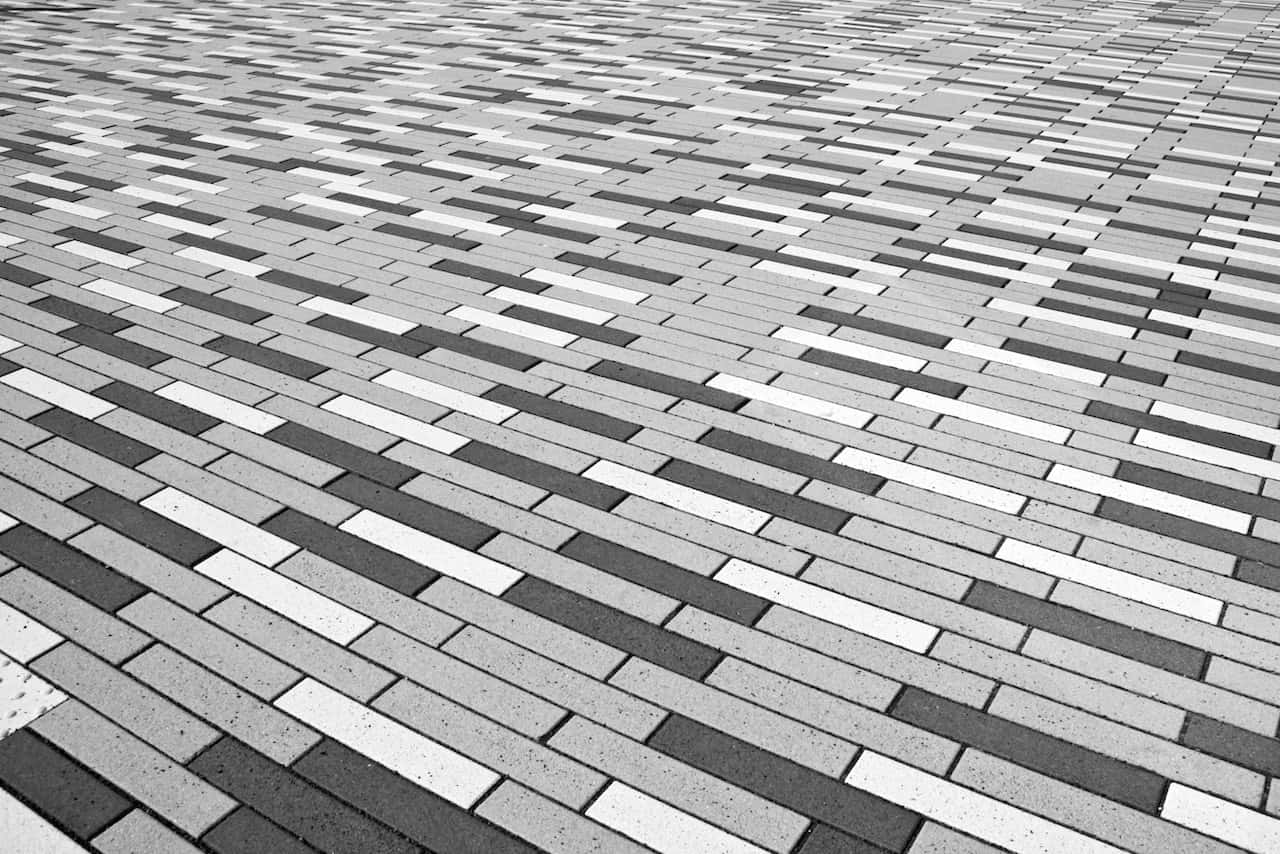
Framed Kota Stone Flooring
This Kota stone floor design is one of the commonest features in waiting room and living room designs. Its timeless nature is a testament to how beauty lies in simplicity. It makes use of Kota stone in a mirror finish and cuts the monotonous grey with a strip of brilliant white in marble.
The marble strip forms a frame along the edges of the space and offers a prim and proper look. It cuts down the cost of the flooring while also giving it a luxurious effect. However, if you wish to skip the marble entirely, you can pair the grey Kota stone with black or green stripes.
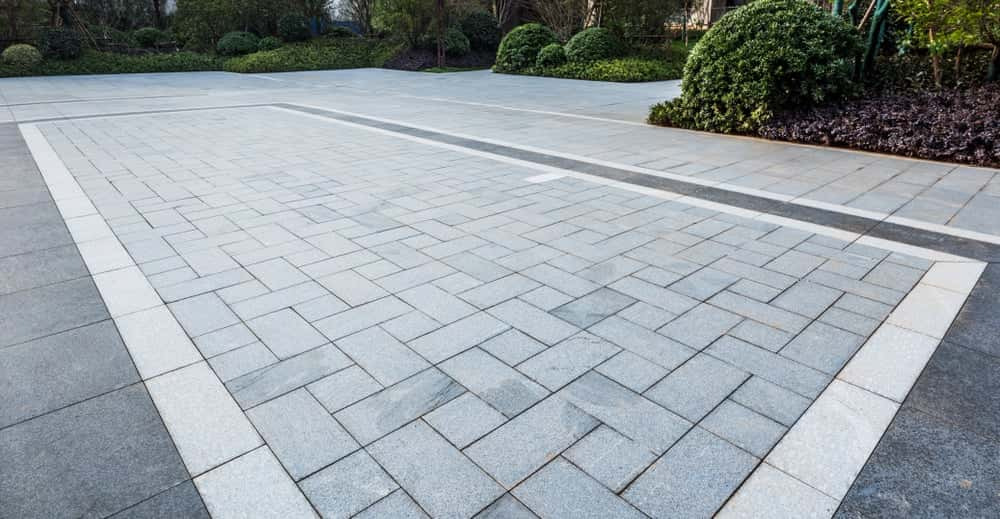
Kota Stone with Contrast Grouting
Here’s yet another black Kota stone flooring design that requires minimal effort yet looks captivatingly gorgeous. And you don’t even need special materials to pull off this look. Such Kota stone floor design makes use of white grouting against black Kota stone so that the contrast of black and white makes the tiles pop out.
The black-and-white inspiration is simply illustrative, and you can play around with different combinations. If you are more into aesthetics, you can even try epoxy grouting by mixing it with attractive colours.
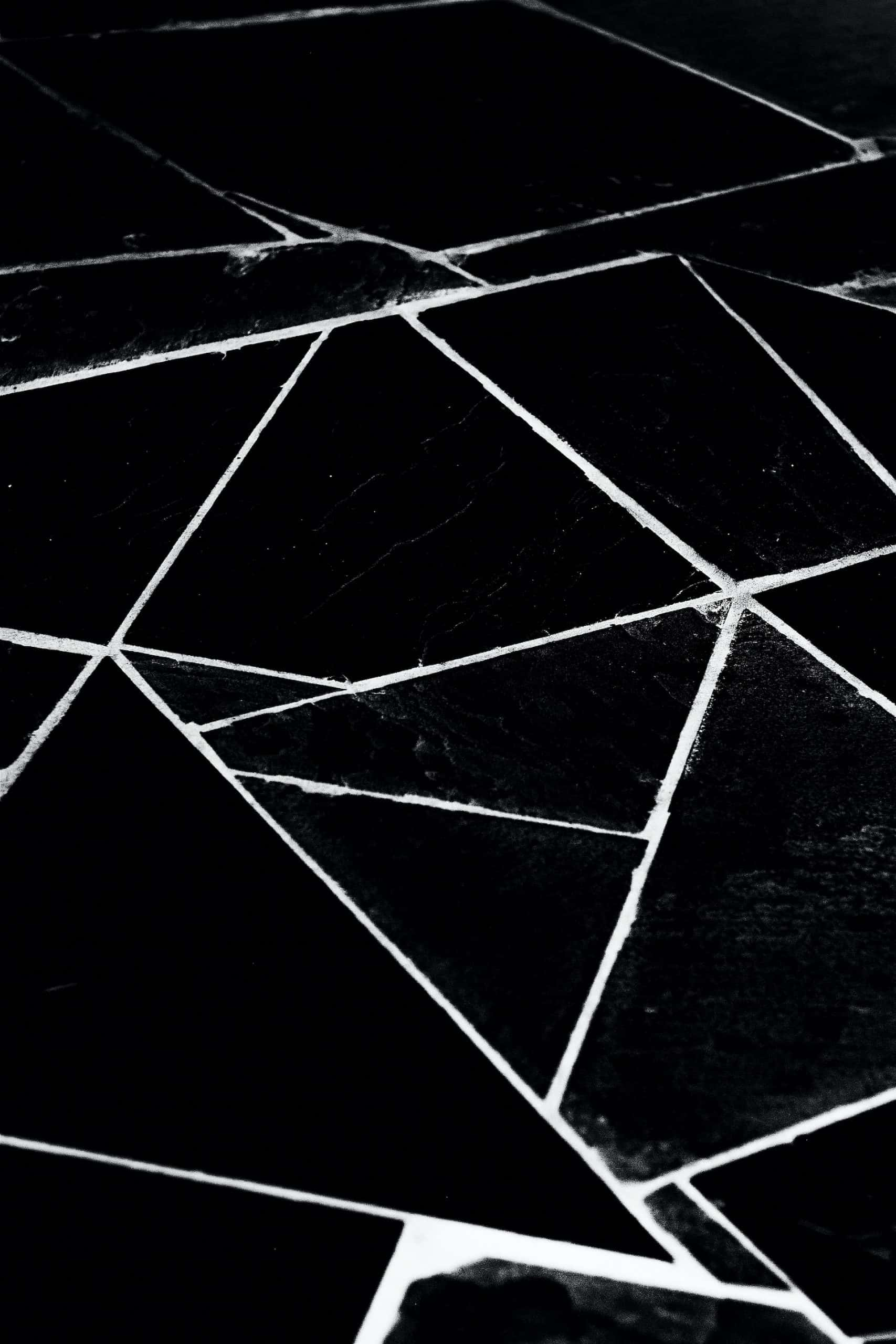
Mosaic Kota Stone Flooring
As the name suggests, the Mosaic Kota Stone floor design sports differently coloured Kota stone tiles placed next to each other to get a mosaic effect. Feel free to go absolutely crazy with the colours – from rust red to charcoal grey to bottle green to powder blue and everything in between – play around with them to find what works for you!
You can even try this design using Kota stone tiles in different or random shapes to get the “pieced together” appearance that makes the flooring look whimsical and artsy.
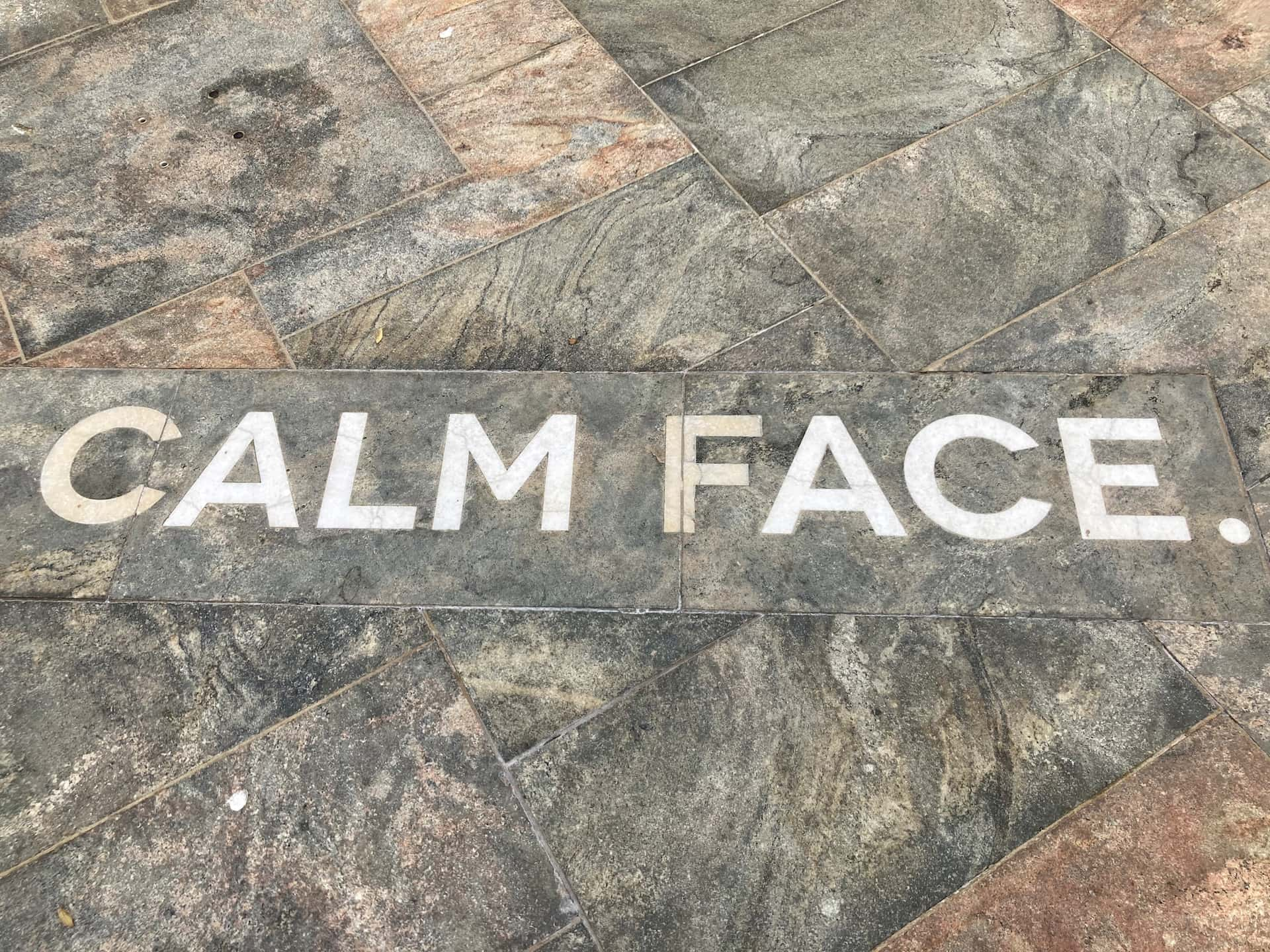
Kota Stone Pathways
While the previous Kota stone designs are to be used in rooms, this one is more suited for outdoor applications, such as your garden or backyard, which people often frequent. Place the Kota stone tiles at some distance and plant lawn grass around it.
You can even use artificial grass for areas like the terrace or balcony. Apart from grass, you can even sprinkle gravel or sand around the tiles to get a beautiful abstract look. While you nail the looks of it, the non-slippery, non-porous, and heat-resistant qualities of Kota stone will offer a pleasantly cold underfoot.
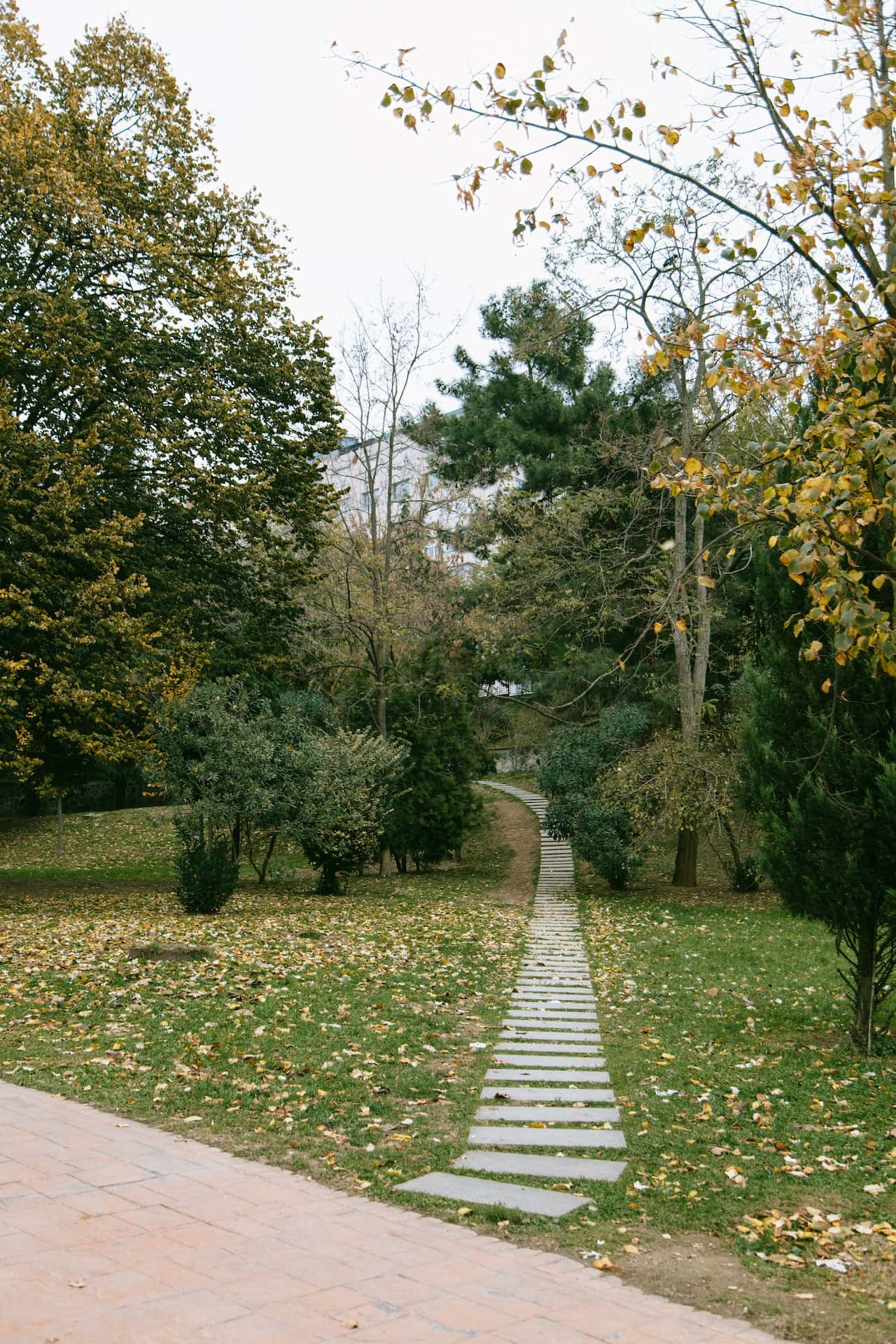
Kota Stone Tumbled Tile Floor Design
This is yet another Kota stone floor design that would look excellent for outdoor use. It makes use of Kota stone bricks that are inlaid in fine-grained mortar. The pattern of the Kota stone floor design is great for forming pathways that weave through your estate or your garden.
Such a design gives a pleasant old-timey feel that looks like the cobbled streets of Europe! So, if you are looking for natural, weathered, and vintage flooring, even in new installations, then this Kota stone floor design is what you need.
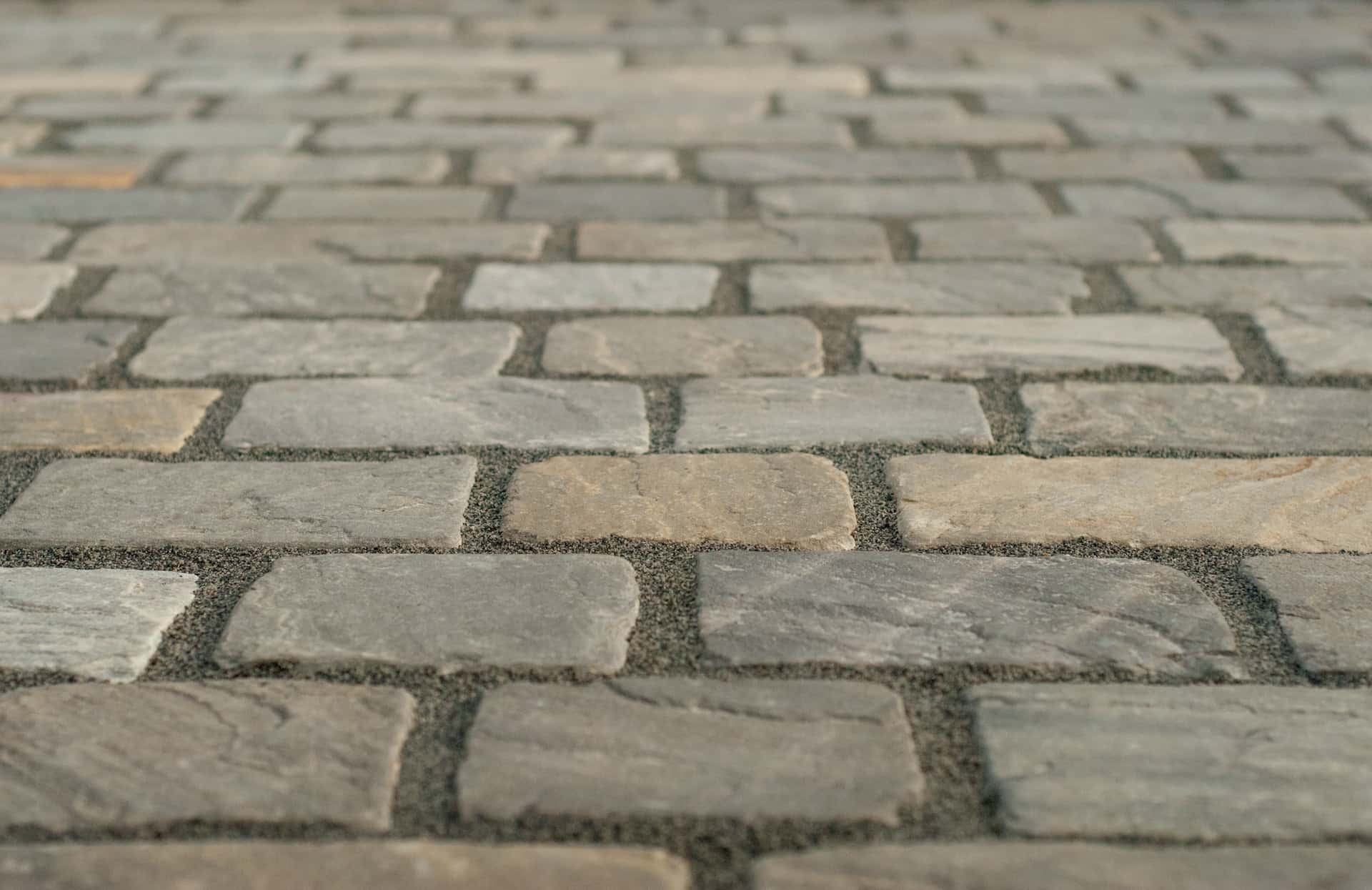
In Conclusion
With this, we come to the end of everything you need to know about Kota stone design in rooms and outdoors. Now that you understand the pros and cons of Kota stone flooring, you are in a better position to make an informed decision on whether or not it is the right choice for you. At the same time, the Kota stone floor designs may have left you feeling inspired to make the best of such a versatile natural stone.
Stay tuned to the HomeLane blog for more tips and tricks on making your house a home. For personalised advice, schedule a free consultation with our experts.
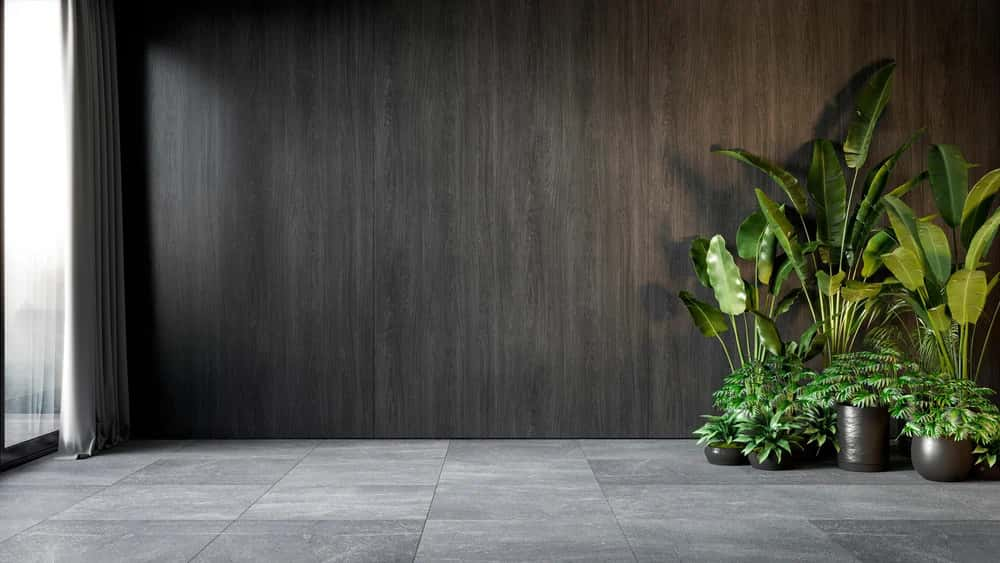
FAQs
Is Kota Stone Good for Flooring?
Kota stone is ideal for flooring as it is durable, can withstand high traffic, and is thermally insulated. Hence, you can use it as flooring inside and outside your home.
Which Stone Flooring Is Best?
Some of the best stone flooring for Indian households include:
- Marble
- Granite
- Limestone (including Kota stone flooring)
- Slate
- Sandstone
- Travertine
What Is Kota Stone Flooring?
Kota stone flooring is flooring made using Kota stone tiles.
Is Kota Stone Waterproof?
Yes, since Kota stone is non-porous, it is waterproof.
What Is the Thickness of Kota Stone?
Typically, the thickness of Kota stone ranges from 1 to 1.5 inches. However, you can even get 2 inches thick Kota stone for a higher price.
What Are the Different Colours Available for Kota Stone?
Kota stones are available in a variety of colours. Some of the common ones include:
- Natural blue
- Light and dark brown
- Grey
- Beige
- Black
- Green
- Honey
- Pink
You may even find Kota stone flooring in mixed colours like blue-grey, green-grey, and other combinations.
What Is the Cost of Kota Stone Flooring?
The cost of Kota stone flooring depends on several factors like the thickness of the stone, type of surface finishing, the colour of the stone, size, etc. The price may also vary depending on where you source the Kota tiles from and the volume of your order. Typically, the cost of Kota stone ranges from Rs. 16/- to Rs. 50/- per square foot.

